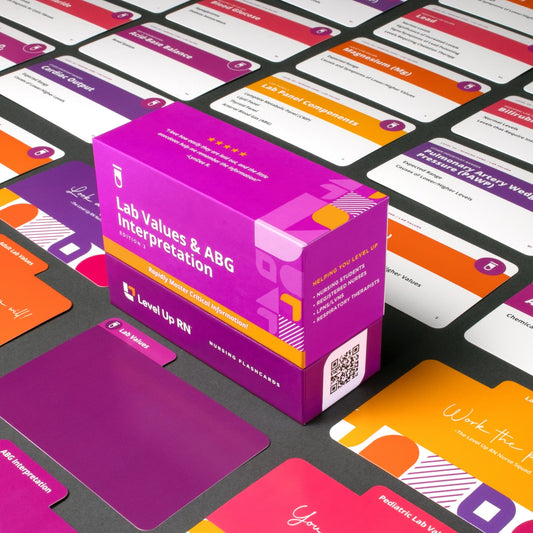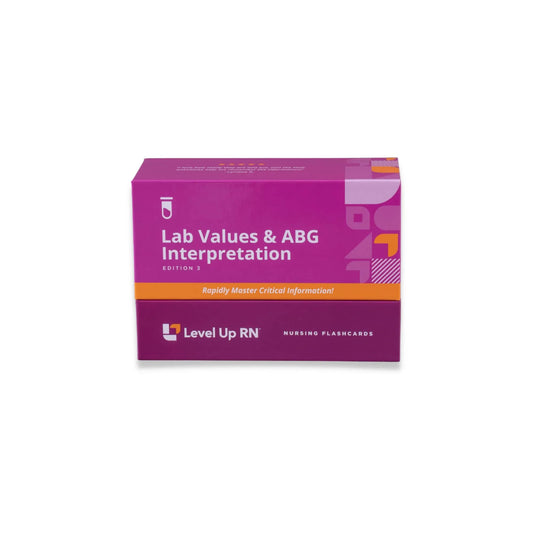Arterial Blood Gas (ABG) Interpretation (11)
Filter Lab Values & ABG Interpretation Articles
Shop
Lab Values & ABG Interpretation - Nursing Flashcards
Regular price $39.95Regular priceUnit price per$39.95Sale price $39.95Videos by Subject
Tips & More
Exam Information
Subscribe













